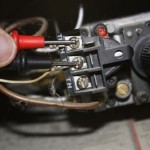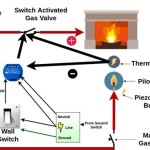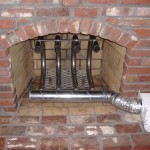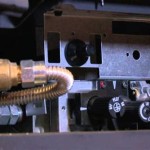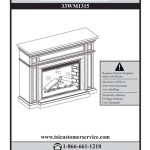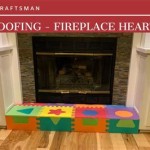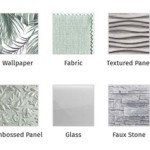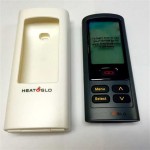How Much Do Fireplace Inserts Cost? A Comprehensive Guide
Fireplace inserts provide an efficient and aesthetically pleasing way to enhance the heating capabilities of an existing masonry fireplace. Unlike open fireplaces, which lose a significant amount of heat up the chimney, inserts are designed to trap and radiate heat back into the room, significantly improving heating efficiency. Determining the cost of a fireplace insert involves several factors, from the type of fuel it uses to the installation complexities involved. This article provides a detailed overview of the factors influencing the cost of fireplace inserts, helping homeowners make informed decisions.
Factors Affecting Fireplace Insert Costs
Several elements contribute to the overall price of a fireplace insert project. These factors include the type of insert (wood, gas, or electric), the BTU rating and heating capacity, the efficiency rating, the brand and model features, and the installation requirements specific to the home. Understanding these factors will help in accurately estimating the investment necessary for a fireplace insert.
The type of fuel the insert uses is a significant cost driver. Wood-burning inserts generally have a lower upfront cost for the unit itself compared to gas inserts. However, they require a consistent source of firewood and ongoing maintenance to ensure safe and efficient operation. Gas inserts, on the other hand, can be powered by natural gas or propane, offering convenience at a potentially higher initial investment. Electric fireplace inserts, while offering simpler installation and operation, might not provide the same level of heating power as wood or gas options and can incur higher electricity costs depending on usage.
The BTU (British Thermal Unit) rating of the insert is an indicator of its heating capacity. A higher BTU rating usually correlates with a higher price. The appropriate BTU level will depend on the size of the area that needs to be heated. Choosing an insert with an inadequate BTU rating will lead to insufficient heating, while selecting an overly powerful insert for a small space can result in discomfort and energy waste.
The efficiency rating of a fireplace insert measures the percentage of fuel energy that is converted into usable heat. Higher efficiency ratings translate to lower fuel consumption and reduced heating costs over time. While more efficient inserts may have a higher initial price tag, their long-term operational savings can offset the initial investment. Homeowners should consider the long-term cost savings when evaluating different inserts with varying efficiency ratings.
Finally, brand reputation and model features play a role in pricing. Well-established brands known for their quality and durability typically command higher prices. Features such as remote controls, thermostats, blowers, and decorative options can also add to the overall cost of the insert. Balancing desired features with budgetary constraints is an important step in the selection process.
Component Costs: Breakdown of Expenses
To accurately estimate the cost of a fireplace insert project, it’s essential to consider the individual components that contribute to the total expense. These components include the cost of the insert unit itself, installation labor, materials required for installation, and any necessary permits or inspections.
The fireplace insert unit represents the largest single expense. Wood-burning inserts can range from approximately $1,500 to $4,000, depending on size, BTU rating, and features. Gas inserts generally range from $2,500 to $6,000 or more, influenced by features like standing pilot lights, electronic ignition, and decorative options such as realistic log sets. Electric fireplace inserts, being the simplest in design, typically range from $200 to $1,500, with pricing based on size, aesthetics, and heating capacity.
Installation labor is another significant expense. The complexity of installation varies depending on the type of insert and the existing fireplace. Wood and gas inserts generally require professional installation, which includes preparing the fireplace opening, connecting the insert to the chimney liner, and ensuring proper ventilation. Installation costs can range from $500 to $3,000 or more, depending on the complexity of the project and the geographic location. Electric inserts are often easier to install and may require minimal professional assistance, thereby reducing labor costs.
Materials required for installation include items such as a chimney liner, connector pipes, sealant, and any necessary framing or masonry work. A chimney liner is crucial for wood and gas inserts to ensure proper venting of combustion gases and prevent chimney fires. The cost of a chimney liner can add several hundred to over a thousand dollars to the overall project cost, depending on the length and material of the liner. Additional materials might include gas line connections, electrical wiring, and decorative trim. These materials can add an additional $100 to $500 to the total cost.
Local building codes often require permits and inspections for fireplace insert installations. Permit fees vary depending on the municipality and can range from $50 to several hundred dollars. Inspections are necessary to ensure that the installation meets safety standards and complies with local regulations. These costs should be factored into the overall project budget.
Types of Fireplace Inserts and Their Cost Implications
The type of fireplace insert chosen significantly influences the project's overall cost. Each type—wood, gas, and electric—presents unique cost considerations regarding the unit, installation, fuel, and maintenance. Understanding these differences is crucial for selecting the option that best aligns with budget, heating needs, and lifestyle.
Wood-burning inserts are generally the least expensive to purchase initially. However, the ongoing cost of firewood can be substantial, especially in regions with harsh winters. The cost of firewood depends on the type of wood, the quantity purchased, and the local market rates. Wood-burning inserts also require regular chimney cleaning to remove creosote buildup, which can be a fire hazard. Chimney cleaning services typically cost between $100 and $300 per year. Furthermore, wood-burning inserts require more hands-on operation, including loading wood, controlling the air intake, and cleaning out ashes.
Gas fireplace inserts offer convenience and ease of use, but they typically have a higher upfront cost than wood-burning inserts. The cost of operating a gas fireplace insert depends on the price of natural gas or propane. Natural gas is typically less expensive than propane, but access to a natural gas line is not always available. Propane requires a propane tank, which needs to be refilled regularly. The cost of propane varies depending on market conditions and the supplier. Regular maintenance, including burner cleaning and inspection of gas lines, is also necessary, typically costing between $100 and $200 per year.
Electric fireplace inserts are the easiest to install and require minimal maintenance. However, they might not provide the same level of heating power as wood or gas inserts, and the cost of electricity can add up over time. The cost of operating an electric fireplace insert depends on the electricity rates in the area and the amount of usage. While the unit price is generally lower, the long-term operational costs could be higher depending on heating needs. Electric inserts may be a suitable option for supplemental heating in smaller spaces or for purely aesthetic purposes.
In summary, the total cost of a fireplace insert project involves a multifaceted evaluation. Homeowners should consider the initial purchase price of the insert, installation labor and materials, ongoing fuel costs, and maintenance requirements. Thorough research and comparison of different types and models can help ensure that the selected fireplace insert aligns with the homeowner's needs and budget.
Accurate budgeting for a fireplace insert project also involves obtaining multiple quotes from reputable installers. Comparing quotes allows homeowners to identify the most competitive pricing and ensure that they are receiving a fair and transparent estimate. It is important to ask for detailed breakdowns of the costs involved, including labor, materials, and any additional fees. Checking references and reviews of installers can provide valuable insights into their quality of work and customer service.
Ultimately, the decision regarding which fireplace insert to install should be based on a comprehensive assessment of the homeowner’s heating needs, budget, lifestyle, and aesthetic preferences. Investing time in researching and planning the project can contribute to a successful and satisfying outcome.

Estimated Page Fireplaces Stoves Inserts Wood Gas Pellet

Gas Fireplace Insert Cost Forbes Home

Estimated Page Fireplaces Stoves Inserts Wood Gas Pellet

A Step By Guide To Understanding Fireplace Inserts

Gas Fireplace Inserts Pros And Cons Of Ventless Fireplaces

How Much Does It Cost To Install A Gas Fireplace Homeserve Usa

Wood Burning Fireplace Inserts 1 Stove Insert Dealer

How Much Does A Fireplace Insert Cost 2024 Data
.aspx?strip=all)
Cost Of Operating A Wood Insert Cord Calculator Regency

Estimated Page Fireplaces Stoves Inserts Wood Gas Pellet
Related Posts

